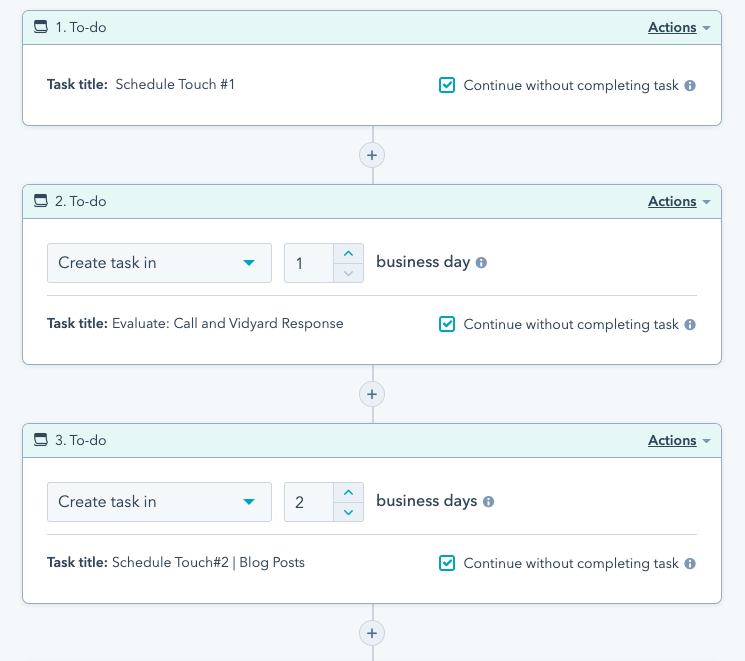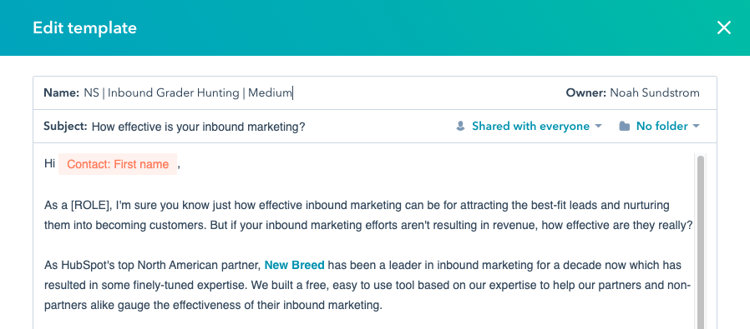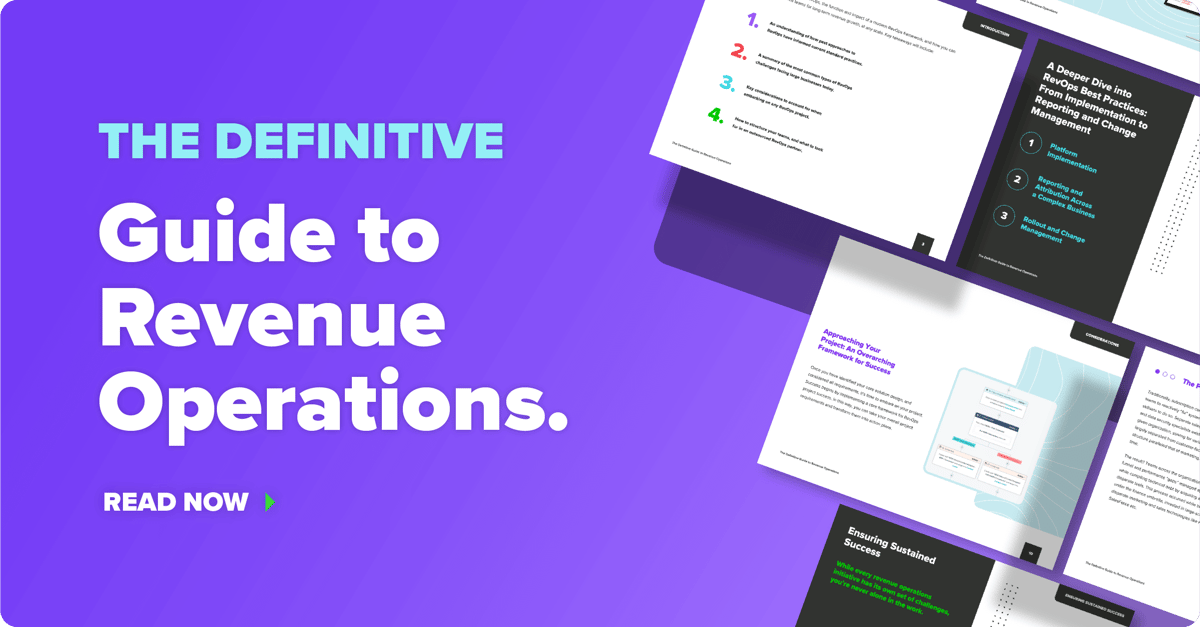There’s only so much time in a workday, which can force sales reps to feel like they need to choose between sending out a large number of emails and personalizing each one so it has a higher likelihood of effectiveness.
Sales email sequences allow sales and business development teams to increase the efficiency of their outreach efforts so they can get more messages out in a day. An email sequence is a semi-automated communication tool containing templates, tasks and cadence guidelines for sales outreach.
There are multiple themes or topics you can cover within an outreach sequence, but the ultimate goal is to engage your prospects wherever they are in their buyer’s journey. For qualified inbound leads, that might be on a one-to-one basis with nurturing content that encourages them to keep revisiting your website. For a hot lead, the sequence might have more of a bottom-of-the-funnel focus that aims to get them to book a meeting.
However, for email sequences to be effective, they need to have some elements of personalization. While you can bulk enroll contacts into fully automated sequences, that kind of set-it-and-forget-it approach won’t drive the results you want.
The Elements of Effective Sales Email Sequences
Cadence
A sequence’s cadence dictates how spaced out the tasks and outreach attempts are. The ideal cadence will depend on the needs of your audience.
A sequence targeting outbound leads should have a longer time in between touches than a sequence targeting an inbound lead because the goal is to generate interest whereas with an inbound sequence you need to be fast enough to retain the attention you have and not lose momentum.
Different buyer personas and ICPs may also have different needs depending on their communication preferences.
Quantity and type of sequence steps
HubSpot recommends including eight touchpoints in your sales outreach sequence. Beyond that, the results tend to dip. Additionally, you should have a variety of different types of steps you take. In addition to having emails, you should also consider calls, voicemails and social media outreach that can correspond with your email messages.

For example, when a prospect is enrolled in a sequence they’ll receive the first email. Then three days later they’ll get a follow-up email. Three days after that, another email will be sent and the sales rep will get a task prompting them to send a connection request on LinkedIn. Finally, five days later, the rep will get a task to call the prospect in the morning and then send an email in the afternoon referencing the call or voicemail.
Each step of the sequence, whether it’s an email, call or social media connection, should have a set intent — a call-to-action that aligns with where the prospect is in their buyer’s journey. What is it trying to accomplish and what’s the specific action you’re trying to get your prospect to take?
Email templates
Your CRM has a lot of valuable information that can help you automate email personalization. Using tokens for properties like company name and first name within your email templates can save you time and prevent the possibility of typos.
Beyond that, each template should also have some places that call for manual personalization.

Your salutation, sign off and contact details can be the same for every email. You might have identical CTAs for multiple prospects who are at the same step of their buyer’s journey. Some of the messaging can even be pre-written within each template. But, you should also leave sections where you’ll fill in information based on what you know about the individual prospect.
For example, if you’re sharing content, pick out custom assets for each prospect based on what they’ve indicated an interest in. If you’re referencing other companies you’ve worked with, tailor those examples to reflect the kind of company the prospect works at.
At New Breed, our team aims to write two to three custom sentences for each email.
Reporting and A/B testing
Just as you don’t want to set and forget your sequences, you also don’t want to assume that your sequences are effective. Even though you’re customizing the content within each sequence, you should still periodically take a step back and analyze how the sequence as a whole is performing so you can adjust and optimize it over time.

The big question to keep in mind as you’re reporting on your email sequences is “how is this helping move prospects through the buyer’s journey?” Even though the cadence and exact messaging can vary from prospect to prospect, the intent of each step should be generally the same, allowing you to measure the aggregate performance.
Another way you can analyze sequences is by running A/B tests on them. If you have multiple sequences that can apply to the same audience, you can compare their performance to understand what combination of steps and messaging is most effective.
The Takeaway
Sales email sequences enable you to save time, report on your outreach and add structure to your day.
Once you have your sequences set up and qualified people enrolled in them, you’ll have a list of tasks each day informing you what needs to be done and who needs attention. This ensures that all of your prospects receive a full follow-up experience.
Additionally, since the outreach you’re implementing through sequences has been tried and tested with numerous prospects, you’ll know that it’s effective. This way, you can focus on adding in enough personalization to ensure the messaging resonates with each prospect without having to start from scratch every time.





